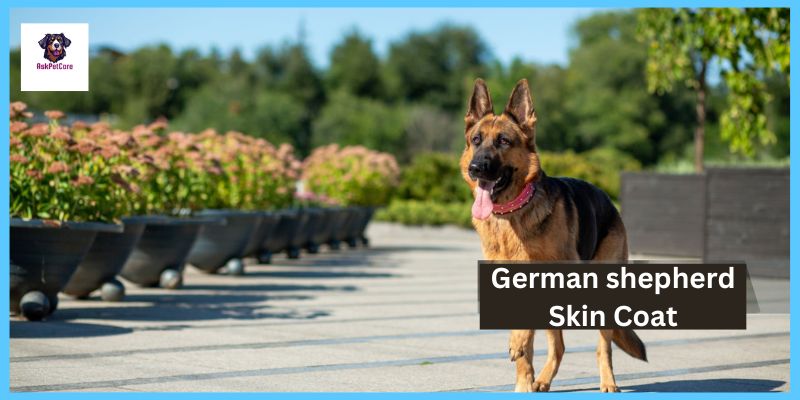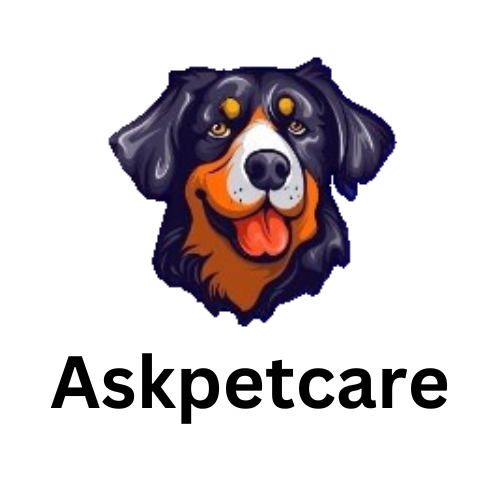Hi shepherd lovers today I will explain in detail about the German shepherd skin coat.
The German shepherd has a special look with two layers of fur that help keep them warm and protected. The outside layer is thick and tough, often with a slight wave or straightness to it. Underneath, they have a fluffy layer that helps them stay cozy in different weather. German Shepherds come in different colors like black and tan, sable, and solid black.

It’s important to brush them regularly to keep their coat healthy and clean by getting rid of loose hair and dirt. Sometimes, they can have skin problems like allergies or dryness, so it’s essential to take care of their diet and skin. With the right care, the German Shepherd’s coat stays beautiful and is one of the things that make them special.
Hello everyone who loves dogs! I’m Dr. Arif Aziz, and I’ve been taking care of pets especially dogs at my clinic for a long time, exactly 14 years! I’m here to share some valuable information with you that I’ve gathered from books during my study time written by experts in veterinary medicine (DVM) and MSC (Master of Science), as well as from my own experiences working with dogs.
German shepherd coat structure:
The German shepherd’s coat is a vital aspect of its overall structure, protecting from various environmental elements while also contributing to its distinctive appearance. Here’s a detailed overview of its structure:
- Outer Coat (Guard Hair):
- The outer coat of the German Shepherd is composed of course, straight, and dense guard hairs.
- These guard hairs serve as the primary barrier against dirt, moisture, and debris, helping to keep the dog’s skin and undercoat protected.
- The texture of the guard hairs can vary slightly among individual dogs, with some displaying a slight wave or feathering along the back and neck.
- Undercoat:
- Beneath the outer coat lies a thick, insulating undercoat, which is softer and denser than the guard hairs.
- The undercoat serves as an additional layer of insulation, providing warmth in cold weather and helping to regulate body temperature in various climates.
- This undercoat sheds seasonally, with heavier shedding occurring in the spring and fall as the dog’s coat adjusts to changing temperatures.
- Coloration:
- German Shepherds exhibit a range of colorations, including black and tan, sable, solid black, and occasionally, solid white.
- The most common color pattern is black with tan markings, where the tan appears on the dog’s face, chest, legs, and underside.
- Sable German Shepherds feature a mixture of colors, with a dominant hue (usually black or brown) interspersed with lighter strands, giving the coat a multi-tonal appearance.
- Skin:
- Beneath the coat, the German Shepherd’s skin is typically firm and elastic, fitting snugly against the body.
- The skin should be free of lesions, rashes, or other abnormalities, indicating good overall health.
- However, German Shepherds may be prone to certain skin conditions, such as allergies, hot spots, or dermatitis, which require regular monitoring and appropriate veterinary care.
- Maintenance:
- Proper grooming is essential to maintain the health and appearance of the German Shepherd’s coat.
- Regular brushing helps to remove loose hair, dirt, and debris, while also distributing natural oils throughout the coat for added shine and luster.
- Bathing should be done as needed, using a mild dog shampoo to avoid stripping the coat of its natural oils.
- Additionally, routine veterinary care and a balanced diet are crucial to supporting overall coat health and minimizing the risk of skin issues.
Overall, the German Shepherd’s coat is a complex and multifunctional structure that plays a vital role in protecting the dog from the elements while also contributing to its striking appearance. Proper care and maintenance are essential to ensure the coat remains healthy, functional, and aesthetically pleasing.

Do German Shepherds have oily skin?
Certainly! German Shepherds, like many other dog breeds, can have varying degrees of oiliness in their skin. Here’s a simple explanation:
German Shepherds do have some oiliness in their skin. This oil comes from tiny glands in their skin called sebaceous glands. These glands produce a substance called sebum, which helps keep their skin moisturized and protects it from things like dryness and infections.
However, the amount of oiliness can vary from dog to dog. Some German Shepherds may naturally have oilier skin than others. Factors like genetics, diet, and environment can all play a role in how oily a dog’s skin is.
When a dog’s skin is too oily, it can lead to issues like greasiness, a strong odor, and even skin problems like acne or infections. On the other hand, if the skin is too dry, it can become itchy, flaky, and prone to irritation.
To keep a German Shepherd’s skin healthy, it’s important to find a good balance. Regular grooming, including brushing and occasional baths with a mild dog shampoo, can help keep their skin clean and balanced. It’s also essential to provide them with a nutritious diet and plenty of fresh water to support overall skin health. If you notice any changes in your dog’s skin, like excessive oiliness or dryness, it’s a good idea to consult with your veterinarian for advice on how to keep their skin in the best condition possible.

How do I keep my German Shepherd skin healthy?
Keeping your German shepherd’s skin healthy is essential for their overall well-being. Here’s a detailed yet simple explanation:
- Regular Grooming:
- Brush your German Shepherd’s coat regularly to remove loose hair, dirt, and debris. This helps prevent matting and keeps their skin clean.
- Use a soft-bristled brush or grooming mitt to gently massage their skin and distribute natural oils throughout the coat.
- Pay special attention to areas like behind the ears, under the legs, and around the tail where mats and tangles are more likely to form.
- Balanced Diet:
- Feed your German Shepherd a high-quality, balanced diet that is rich in essential nutrients, including protein, vitamins, and minerals.
- Look for dog food specifically formulated for large breeds or for skin and coat health. Avoid foods with artificial additives, fillers, and excessive grains.
- Consider adding supplements like omega-3 fatty acids or fish oil to their diet to support skin health and reduce inflammation.
- Adequate Hydration:
- Ensure your German Shepherd has access to fresh, clean water at all times. Proper hydration is essential for maintaining healthy skin and preventing dryness.
- Monitor their water intake, especially during hot weather or periods of increased activity, to prevent dehydration.
- Regular Baths:
- Bathe your German Shepherd as needed, using a gentle dog shampoo that won’t strip their skin of natural oils.
- Avoid over-bathing, as frequent bathing can dry out their skin and lead to irritation. Aim for bathing once every 4-6 weeks or as recommended by your veterinarian.
- Environmental Considerations:
- Provide your German Shepherd with a comfortable and clean living environment. Regularly clean their bedding and living areas to remove allergens and irritants.
- Protect your dog from extreme weather conditions, such as excessive heat or cold, which can stress their skin and coat.
- Regular Veterinary Check-ups:
- Schedule regular visits to the veterinarian for check-ups and preventive care. Your vet can assess your German Shepherd’s overall health, including their skin and coat, and provide personalized recommendations for maintaining their well-being.
- Be vigilant for any signs of skin problems, such as itching, redness, lumps, or hair loss, and consult with your vet promptly if you notice any abnormalities.
By following these simple steps, you can help keep your German Shepherd’s skin healthy and ensure they lead a comfortable and happy life.

Why is my German Shepherd’s skin so dry?
If your German shepherd’s skin is dry, it could be due to several reasons. Here’s a simple explanation:
- Lack of Moisture:
- Just like humans, dogs can experience dry skin when they don’t get enough moisture. This might happen if your dog isn’t drinking enough water, especially during hot weather or after exercise.
- Environmental Factors:
- Dry air, especially during winter or in homes with central heating or air conditioning, can strip moisture from your dog’s skin, leading to dryness and irritation.
- Grooming Practices:
- Overbathing or using harsh shampoos can strip your German Shepherd’s skin of its natural oils, causing dryness and flakiness. Similarly, infrequent grooming that leads to a buildup of dirt and debris can also contribute to dry skin.
- Allergies or Sensitivities:
- Your dog may be allergic or sensitive to certain foods, environmental allergens (like pollen or dust), or grooming products. These allergies can manifest as dry, itchy skin.
- Underlying Health Issues:
- Dry skin can sometimes be a symptom of an underlying health condition, such as thyroid problems or hormonal imbalances. It’s essential to consult with your veterinarian to rule out any medical issues.

To help relieve your German shepherd’s dry skin, you can:
- Ensure they have access to clean, fresh water at all times.
- Use a moisturizing dog shampoo and limit baths to once every 4-6 weeks.
- Add omega-3 fatty acids or fish oil supplements to their diet to support skin health.
- Use a humidifier in your home to add moisture to the air, especially during dry weather.
- Avoid exposing your dog to extreme temperatures and dry, windy conditions.
If your German shepherd’s dry skin persists or worsens despite these measures, it’s best to seek guidance from your veterinarian. They can help identify the underlying cause and recommend appropriate treatment options to keep your dog’s skin healthy and comfortable.
- Question: Why do German Shepherds have a double coat?
Answer: German Shepherds have a double coat to provide insulation and protection from the weather.
- Question: What is the outer layer of a German Shepherd’s coat called?
Answer: The outer layer of a German Shepherd’s coat is called the guard hair.
- Question: What is the purpose of the undercoat in a German Shepherd?
Answer: The undercoat of a German Shepherd helps regulate their body temperature in different climates.
- Question: What colors can German Shepherds come in?
Answer: German Shepherds can come in colors like black and tan, sable, and solid black.
- Question: Why is grooming important for German Shepherds?
Answer: Grooming is important for German Shepherds to maintain the health and appearance of their coat by removing loose hair and debris.
I hope you will thoroughly understand the skin or coat of a German shepherd, still any quarry contacts me.
Disclaimer: This information is general advice only. Before starting any treatment or supplement with your pet, please consult your vet first for the best approach to getting your pet back to its best health.
